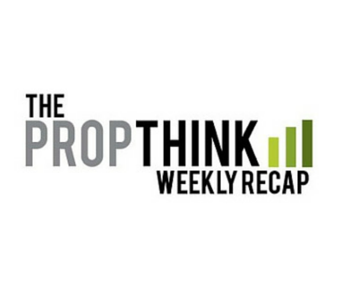The markets have rebounded precipitously from lows this October, with both the S&P 500 and iShares NASDAQ Biotechnology Index (IBB) making new all-time highs in the month since.
We’ve referenced one simple technical metric in recent past, but it’s worth revisiting after this week’s action. Below is a 6-year weekly view of the SPDR S&P 500 Exchange Traded Fund (SPY), which is a tradeable version of the S&P index, followed by a 1-year daily chart. In October during the correction we pointed out the potential for support and a turnaround in the 180 area, poignant given that the uptrend line seen in the lower part of this chart proved the bottom of the correction. Now, we’re looking at the same top of this current trend to act as resistance.


The markets gapped higher on Friday morning, coming awfully close to top of the SPY’s 6-year trend before giving up almost the entire day’s gains. This trendline has repeatedly acted as resistance; thus a short-term pull-back would not come as a surprise in the near future.
Next week is Thanksgiving for American investors, and given that many market participants will be on vacation and most companies will hold off on major announcements for the week, the adage “Never short a dull market” seems pertinent. One might consider selling out-of-the-money Calls or Call Spreads to take advantage of time decay as the market chops – or dips. It’s a relatively simple strategy, but be sure you understand the risks involved. Note also that the S&P is overbought on a number of technical indicators.Just as important, breaking out of this resistance area at ~$208 would mean we’re headed for significantly higher highs. Keep this in mind into year-end.
Though it had little impact on small or mid-cap equities, Pfizer (PFE) on Monday announced that it’s paying $850 million and up to $2 billion in potential milestones to partner with Germany’s Merck KGaA on the anti-PD-L1, MSB0010718C. The two will also collaborate on advancing Pfizer’s own anti-PD-1 antibody into clinical testing.
What makes this announcement noteworthy is the sheer size of Pfizer’s upfront payment, which puts this partnership at the top of the list for biggest upfront cash outlays in biotech. Celgene (CELG) claimed the top spot earlier this year with its $700 million payment to Nogra Pharma in exchange for rights to GED-0301, a drug for gastrointestinal indications. Additionally, the pharmaceutical company is playing catchup in immuno-oncology, a space led by Bristol Myer’s (BMY) anti-PD1 nivolumab and Merck’s (MRK) pembrolizumab. In the anti-PD-L1 space, Roche-Genentech (RHHBY) and AstraZeneca (AZN) currently lead with MPDL3280A and MEDI4736.
Celldex (CLDX) continued higher all week, up 40% in the last ten trading days on what appear to be groundbreaking results from a phase II study of rindopepimut in brain cancer. This immunotherapeutic is meaningfully extending survival in certain patients with glioblastoma multiforme, and the positive data caught the Street off-guard given somewhat disappointing results to date from the asset. As explained in a brief note on Thursday, investors are bidding up CLDX for two reasons: 1) the company signalled that they hope to discuss with the FDA whether rindopepimut is eligible for an accelerated approval; and 2) investors/anaysts are modeling a higher probability of success (thus future cash flows) into price targets for CLDX. Unlike other therapeutic vaccines, Celldex’s approach appears to be working.
Tekmira Pharmaceuticals (TKMR), on which we’ve opined at length in the last year, announced a number of developments coinciding with an invester/analyst day in New York on Friday. Of note: the company is moving forward with a fourth-generation of its LNP delivery technology and also outlined plans to identify at least one messenger RNA drug candidate next year employing this same LNP technology for delivery.
Tekmira will move forward with two hepatitis B product candidates in early 2015, which will each employ the same RNAi triggers but will differ based on the version of LNP used in delivery (3rd vs 4th generation). The company is also on track to disclose interim data before the end of 2014 for an ongoing phase II study of TKM-PLK1 in Gastrointestinal Neuroendocrine Tumors. For TKM-Ebola, the company expects to begin studies in infected patients early next year.
Try our proprietary research service, PropThink Premium, for just $50. We provide exclusive, actionable trades and investing ideas on emerging-growth healthcare companies. In fact, this exclusive trade was good for almost 20% in just two weeks.
Remember, we’re always publishing free editorial content at PropThink.com: analysis of current events, new summaries, and even FREE research reports on some of our top picks. Stay in the loop with PropThink.com.



